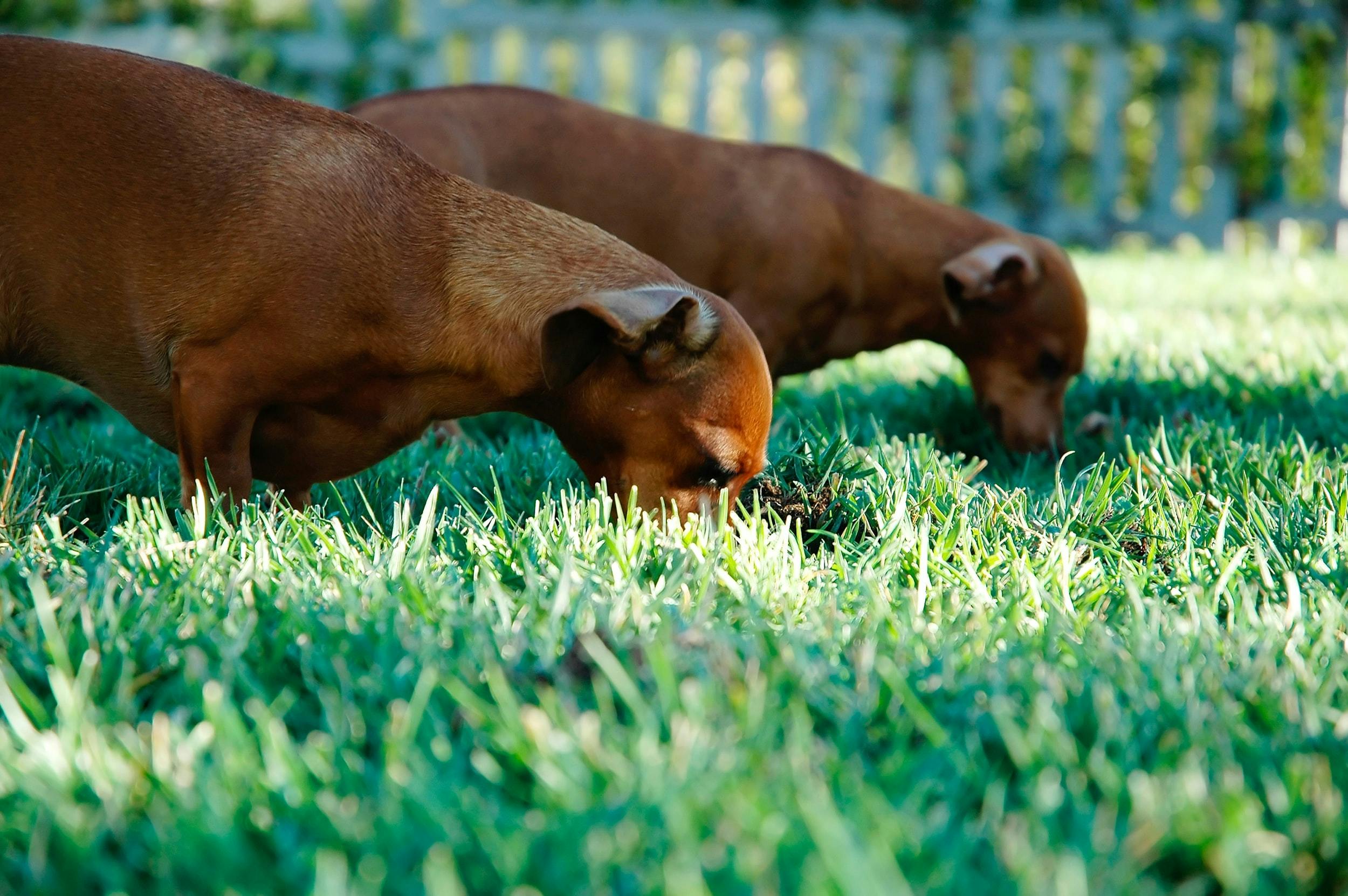- Home
- Dog Wellness
- Benefits of Rotational Feeding for Pets
3 min read
Benefits of Rotational Feeding for Pets

By Tim Falk
Published: 06/30/2021, edited: 08/10/2021
Save on pet insurance for your pet
You don't have to choose between your pet and your wallet when it comes to expensive vet visits. Prepare ahead of time for unexpected vet bills by finding the pawfect pet insurance.
Published: 6/30/2021
For many pet parents, feeding their dog doesn’t involve too much thought — once you find a high-quality diet that your dog likes, you stick to it.
But is this the best thing for your dog or cat? Could they not only benefit from more variety in their diet, but will switching up their food on a regular basis provide a boost for your dog’s health?
If you want to mix things up and let your pet try different diets, you might want to try what’s known as rotational feeding.
What is rotational feeding?
Rotational feeding is simply the practice of rotating your pet’s diet on a regular basis. The basic approach is to change the main protein source in your pet’s diet on a frequency of your choosing — for example, weekly or monthly.
So while beef may be your dog’s main protein source this month, you might switch to a chicken-based diet next month, then lamb, fish, and so on. Some pet parents stick to feeding food from the same brand, while others will expose their cat or dog’s palate to recipes from a range of manufacturers. Some will stick to dry food only, while others mix it up by offering both dry and wet food.
What are the benefits of rotational feeding?
If you choose a high-quality pet food, it’s possible to feed your fur-baby the same thing each and every day and provide all the nutrients they need for a healthy life. So with this in mind, why would you want to try rotational feeding?
Proponents of this approach point to a number of important benefits, the first of which is quite simply variety. The argument is that eating the same food day after day after day makes meals boring and uninspiring for pets. We all love spoiling our fur-babies whenever we can, so rotational feeding ensures that you’re treating their taste buds while still meeting all their nutritional needs.
Another benefit that supporters of this different approach to pet food put forward is that rotational feeding can also help prevent food allergies. They argue that repeated exposure to the same protein source day after day can lead to the development of food intolerances and allergies, and switching proteins regularly reduces their risk of developing any sensitivities.
The third main claimed benefit of rotational feeding is that it helps improve your pet’s overall digestive health. By exposing your pet to a diverse range of nutrients and ingredients, you’re improving the health of their gastrointestinal tract, ensuring that there’s a thriving population of good bacteria in their gut to help maintain digestive balance.
Is rotational feeding right for my pet?
If you like the sound of rotational feeding and its potential benefits, why not start mixing things up for your pet? As you’ll see, there are a few reasons why you might not want to make a rotational diet part of your pet’s regular routine.
We’re not aware of any conclusive scientific evidence that rotational feeding offers substantial health benefits to dogs or cats. That doesn’t necessarily mean it’s harmful — we’re not aware of any conclusive evidence of that either — but just that it’s an area where more study needs to be done.
That said, the main drawback of rotational feeding is its potential to cause an upset stomach. Switching foods is a common cause of tummy troubles for dogs and cats, which is why it’s recommended that you make the transition from one food to another gradually.
A standard approach is to slowly introduce the new food to your pet’s diet over a period of around 7 to 10 days, or even longer if your pet is prone to digestive issues, so regularly rotating your fur-baby’s food could be a slow and time-consuming process. It’s also worth remembering just how convenient it is when you stick to just one food — you know exactly what to buy, you know when you need to stock up on more food, and you know what represents a good price for your cat or dog’s favorite chow.
Finally, if your pet is a notoriously fussy eater, rotational feeding may not be the best approach. For example, let’s say your kitty loved the food they were getting last month, but isn’t a fan of the latest recipe in front of them. Rather than just making do with what they’ve got, they might decide that they’d prefer to hold out until you cave and fill their bowl with something better.
Some pets will simply refuse to sign up for a rotational diet altogether. And provided they’re happy to eat a food that provides complete and balanced nutrition, that’s nothing to worry about.
Ultimately, if you would like to try rotational feeding for your pet, ask a vet. They’ll be able to offer expert advice on whether it could be the right approach for your fur-baby.
You may also like
